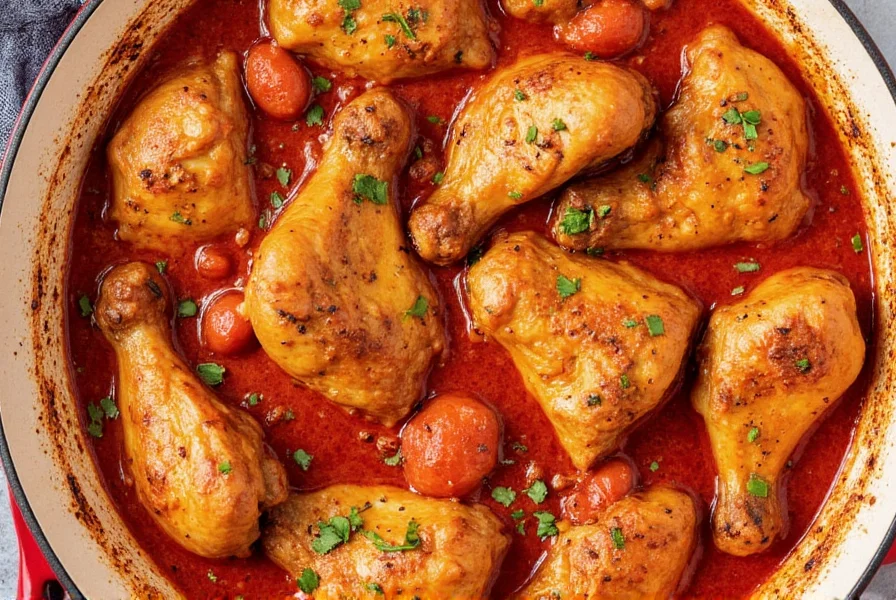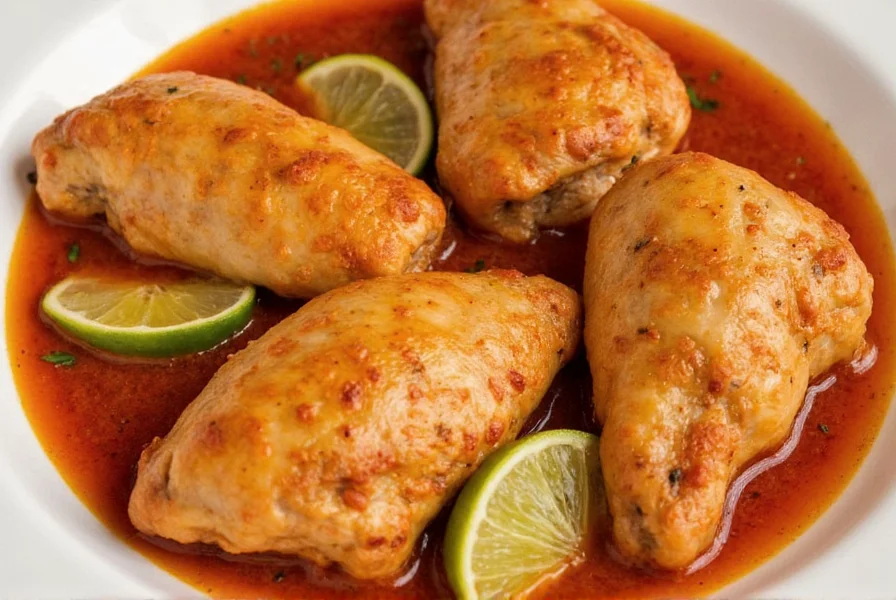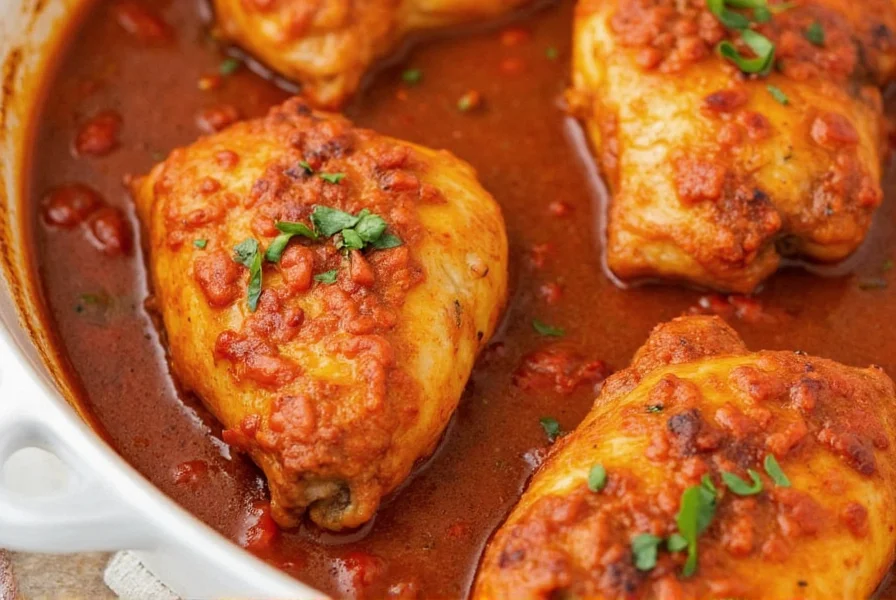When prepared correctly, paprika chicken delivers a beautiful balance of smoky, sweet, and slightly earthy flavors that complement the natural taste of chicken without overwhelming it. The magic happens when quality paprika meets properly seared chicken, creating a sauce that's simultaneously rich and light—perfect for weeknight dinners yet elegant enough for special occasions.
The Essential Elements of Authentic Paprika Chicken
Creating exceptional paprika chicken requires understanding several key components that transform this simple dish into something extraordinary. While recipes vary across regions, certain elements remain consistent in authentic preparations.
Choosing the Right Paprika
Not all paprika is created equal. The type you select dramatically impacts your final dish:
| Type of Paprika | Flavor Profile | Best For |
|---|---|---|
| Hungarian Sweet Paprika | Mild, sweet, earthy | Traditional paprika chicken, goulash |
| Smoked Paprika (Pimentón) | Deep smoky flavor | Adding complexity to chicken dishes |
| Hot Paprika | Spicy with heat | When you want extra kick |
For authentic Hungarian-style paprika chicken, Hungarian sweet paprika is essential. Look for brands that specify "Hungarian" on the label and check the harvest date, as paprika loses potency over time. Fresh paprika should have a vibrant red color and aromatic scent.

Classic Paprika Chicken Recipe
This straightforward yet flavorful recipe yields tender chicken in a rich paprika sauce that's ready in 45 minutes. The secret lies in proper technique rather than complexity.
Ingredients
- 4 bone-in, skin-on chicken thighs (1.5 lbs/700g)
- 2 tablespoons Hungarian sweet paprika
- 1 teaspoon garlic powder
- 1 large yellow onion, thinly sliced
- 3 cloves garlic, minced
- 1 cup chicken broth (low sodium)
- 2 tablespoons sour cream (optional, for finishing)
- Salt and freshly ground black pepper to taste
- 2 tablespoons vegetable oil
Step-by-Step Preparation
- Dry and season: Pat chicken thoroughly dry with paper towels. Combine paprika and garlic powder, then season chicken generously on both sides.
- Sear properly: Heat oil in a heavy skillet over medium-high heat. Place chicken skin-side down and cook undisturbed for 6-7 minutes until golden brown and crispy. Flip and cook 3 more minutes. Remove chicken.
- Sauté aromatics: In the same skillet, add onions and cook over medium heat until deeply golden (about 10 minutes). Add minced garlic and cook 1 minute until fragrant.
- Build the sauce: Return chicken to skillet, skin-side up. Pour in chicken broth, scraping up browned bits from the bottom. Reduce heat to low, cover, and simmer 20-25 minutes until chicken reaches 165°F internally.
- Finish: Remove chicken. Increase heat to medium and reduce sauce by half. Stir in sour cream if using. Return chicken to sauce and serve.
Avoiding Common Paprika Chicken Mistakes
Even experienced cooks make these paprika chicken preparation errors that compromise flavor and texture:
- Using old paprika: Paprika loses potency after 6-12 months. Stale paprika yields flat, one-dimensional flavor. Store in a cool, dark place and replace regularly.
- Adding paprika too early: Never add paprika directly to hot oil—it will burn instantly. Always mix with other dry seasonings and apply to food first.
- Overcooking the chicken: Bone-in thighs need 20-25 minutes after searing. Overcooking dries out the meat despite the sauce.
- Skipping the sear: Proper browning creates fond (those browned bits) essential for flavor development in the sauce.
- Using water instead of broth: Water dilutes flavor. Quality low-sodium chicken broth enhances without overpowering.
Regional Variations of Paprika Chicken
While Hungarian paprika chicken represents the classic preparation, various cultures have adapted this simple concept:
Hungarian Chicken Paprikash (Paprikás Csirke)
The traditional version features chicken simmered in a rich paprika-onion sauce, often finished with sour cream and served over nokedli (Hungarian dumplings). The key is slowly cooking the onions until deeply caramelized before adding paprika.
Spanish-Style Chicken with Smoked Paprika
This variation uses Spanish smoked paprika (pimentón) for a deeper, smokier profile. Often includes tomatoes and bell peppers, reflecting Spain's culinary influences. The smokiness pairs beautifully with grilled chicken.
American Comfort Food Adaptation
In the United States, paprika chicken often appears as a simpler weeknight meal, sometimes baked rather than skillet-cooked. American versions frequently incorporate additional herbs like thyme or rosemary for complexity.

Serving Suggestions for Perfect Paprika Chicken
The right accompaniments elevate paprika chicken from simple to spectacular. Consider these pairings based on the style you've prepared:
- Traditional Hungarian style: Serve with nokedli (Hungarian egg dumplings) or wide egg noodles to soak up the flavorful sauce. A side of pickled vegetables cuts through the richness.
- For weeknight meals: Pair with roasted potatoes and steamed green beans for a complete, balanced dinner ready in under an hour.
- Elegant presentation: Serve on a bed of creamy polenta with roasted Brussels sprouts for a restaurant-quality meal.
- Lighter option: Accompany with quinoa and roasted carrots for a healthier take that maintains authentic flavors.
Storage and Reheating Tips
Paprika chicken often tastes even better the next day as flavors continue to meld. Proper storage maintains quality:
- Refrigeration: Store in an airtight container for up to 3 days. The sauce helps keep chicken moist during storage.
- Freezing: Freeze portions for up to 3 months. Thaw overnight in refrigerator before reheating.
- Reheating: Gently warm on stove over medium-low heat, adding a splash of broth if needed. Avoid microwaving, which can make chicken rubbery.
Frequently Asked Questions
What's the difference between Hungarian paprika and regular paprika?
Hungarian paprika comes from specific pepper varieties grown in Hungary and is known for its superior quality and complex flavor profile. While regular paprika might be a generic blend, authentic Hungarian paprika has distinct sweet, earthy notes without bitterness. Hungarian paprika is graded into several varieties (sweet, hot, rose, etc.) based on pepper ripeness and heat level, with the sweet variety being most common for traditional paprika chicken.
Can I make paprika chicken with chicken breast instead of thighs?
Yes, but with adjustments. Chicken breasts cook faster and dry out more easily than thighs. If using breasts, reduce cooking time to 12-15 minutes after searing, and consider pounding them to even thickness. Boneless, skinless breasts work but skin-on provides better flavor and moisture retention. For best results with breasts, finish cooking in the oven at 375°F (190°C) rather than continuing on stove.
Why does my paprika chicken taste bitter?
Bitterness usually comes from burning the paprika. Paprika scorches at temperatures above 250°F (120°C), creating unpleasant bitter compounds. Never add paprika directly to hot oil—always mix it with other dry ingredients and apply to food first. If your sauce tastes bitter, try adding a small pinch of sugar or a squeeze of lemon to balance the flavors, or start over with fresh paprika and lower heat.
How can I make my paprika chicken sauce thicker without altering flavor?
The best way to thicken paprika chicken sauce without changing flavor is through reduction—simmer uncovered until it reaches your desired consistency. If you need quicker thickening, mix 1 teaspoon cornstarch with 1 tablespoon cold water, then whisk into simmering sauce. Avoid flour directly in the sauce as it can create lumps; if using flour, make a roux first. Remember that the sauce will continue thickening slightly as it cools.











 浙公网安备
33010002000092号
浙公网安备
33010002000092号 浙B2-20120091-4
浙B2-20120091-4